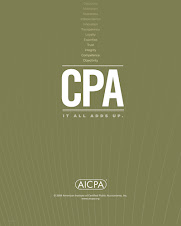As you probably have heard the President wants the upper-incomers who are already paying most of the tax to even pay more. In 2013 (after the election) the current 33% and 35% tax brackets rates will be raising to 36% and 39.6%, respectively, and increasing the top capital gains rate to 20% in the two highest tax brackets and taxing their dividends at ordinary income rates.
That's not the only hit. The proposal would limit the tax benefit of itemized deductions to 28% for taxpayers in higher brackets and reinstating phaseouts of personal exemptions and itemized deductions from prior law. Although this is not an increase in rates, it is an increase in taxes because the amount of income is subject to tax is higher.
Another big question we have is "what is going to happen to estate taxes?" Without a law change the amount subject to estate taxes falls to $1,000,000 and the rate quickly reaches 55%. The budget propose recommends making the estate tax exemption to $3.5 million and topping the rate out at 45%.
There are other tightening proposed in Obama’s budget, but these are the major changes. Don't get excited about these proposals. None of the experts think that they will pass this year. Even so this is a good look at what might be coming in the future.
We will be keeping an eye on this for you.








